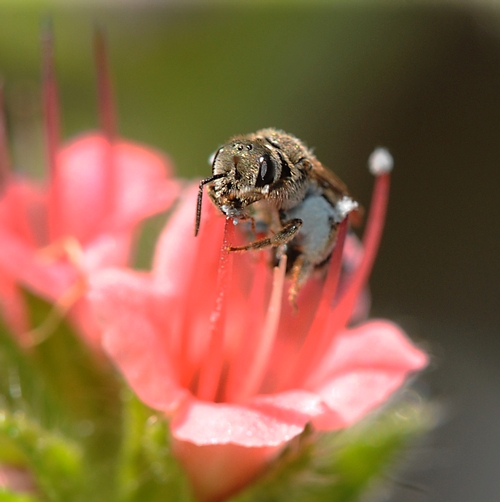If you like to take photos of insects that are as small as a grain of rice, then you'll love--absolutely love--stalking a sweat bee.
Sweat bees, members of the worldwide family Halictinae and order Hymenoptera, are so-named because they are attracted to human perspiration or "sweat." They probably lap up perspiration because of the salt content, according to Christopher O'Toole and Anthony Raw, authors of Bees of the World.
The most important of the many genera, the authors say, are Halictus and Lasioglossum, which are common to both the Old World and New World.
Speaking of common, Halictus is also common in bee friendly gardens and swimming pools. Ever gone for a swim and feel a tiny insect sting you? It may have been a sweat bee. ("Their sting is only rated a 1.0 on the Schmidt Sting Pain Index, making it almost painless," according to Wikipedia.)
O'Toole and Raw point out that some sweat bees are only 4mm long, which is why they can be easily overlooked and so difficult to identify.
What's unique are about these ground-nesting bees? The females of all species of sweat bees mate before winter. "This means that, unlike female solitary bees of other families, those of halictids do not have to mate before founding a nest in the spring," they write.
Native pollinator specialist Robbin Thorp, emeritus professor of entomology at the University of California, Davis, identified this little pollen-packing sweat bee (below) as a female sweat bee, Halictus tripartitus.
She was nectaring a tower of jewels (Echium wildprettii) in our yard and packing a heavy load of blue pollen she'd gathered from the plant.
The tower of jewels is native to the Canary Islands. So, if you visit the Canary Islands, you can probably see--and photograph--this little sweat bee there, too.
Attached Images:

Sweat Bee

Close-Up

Heavy Load